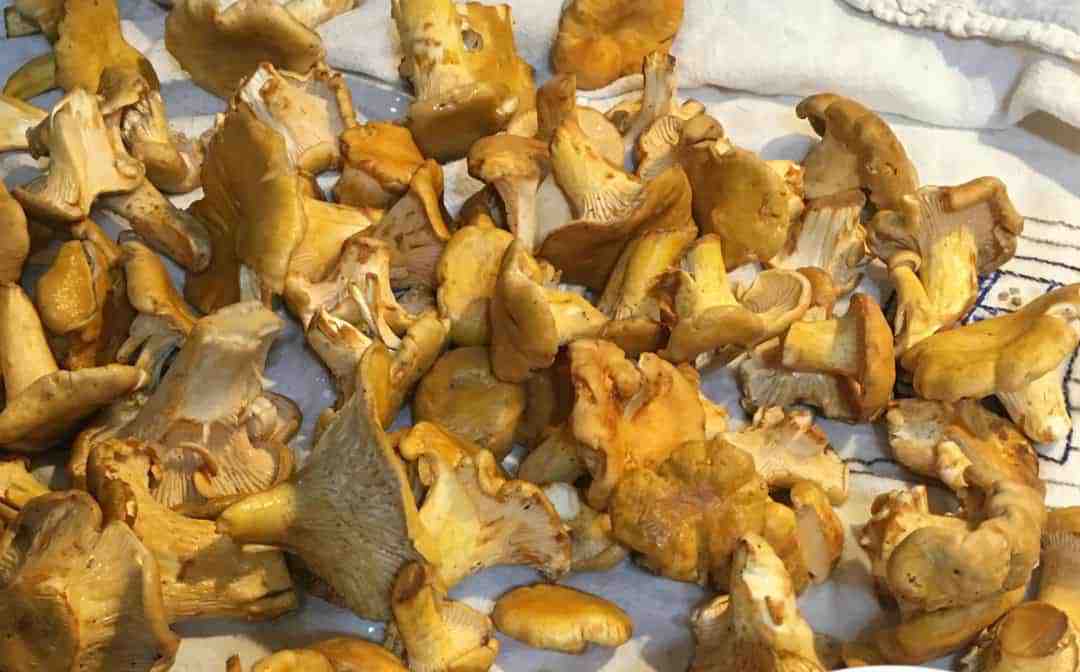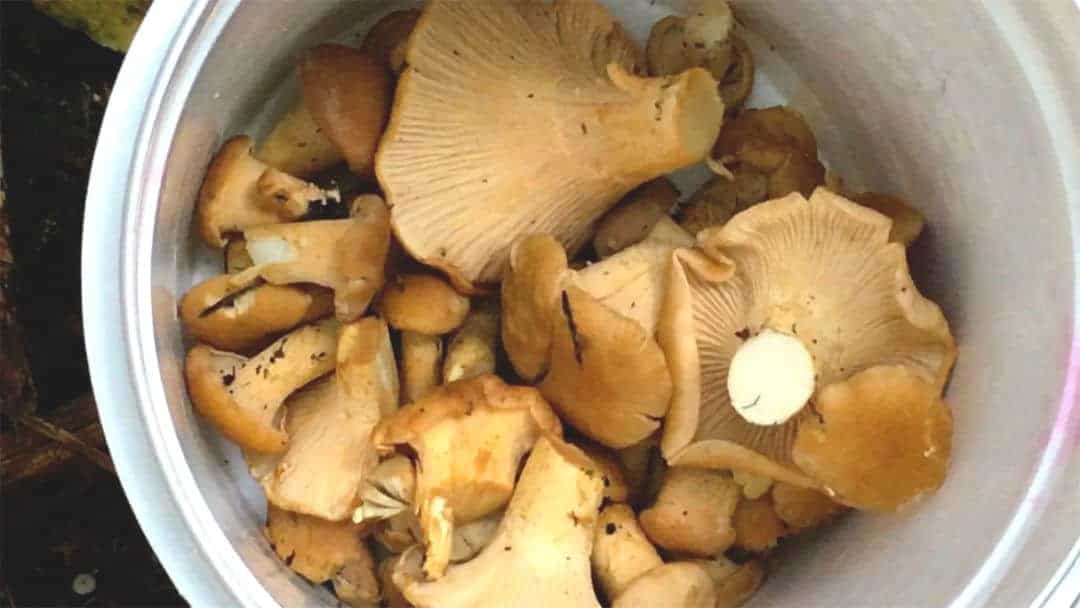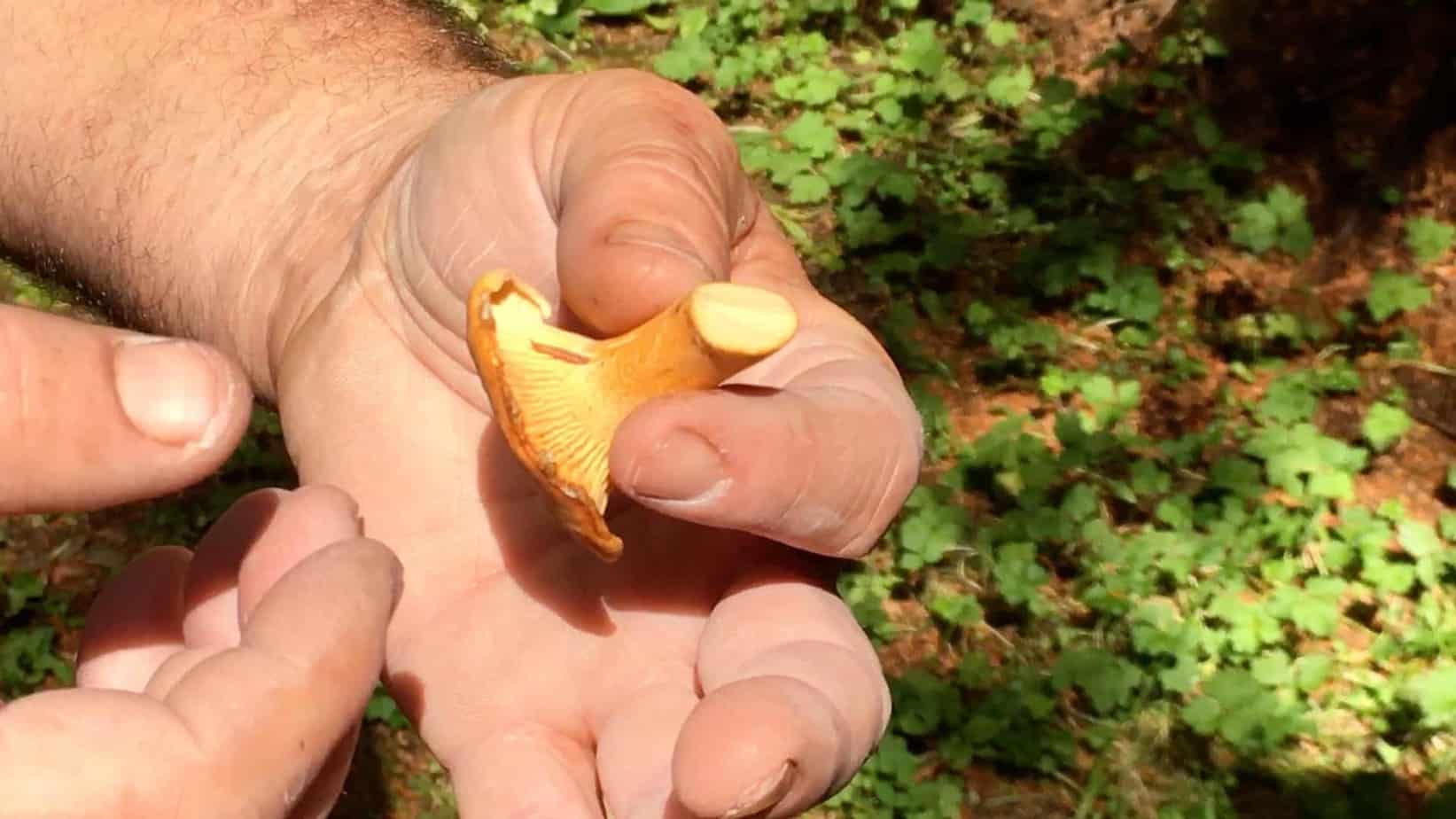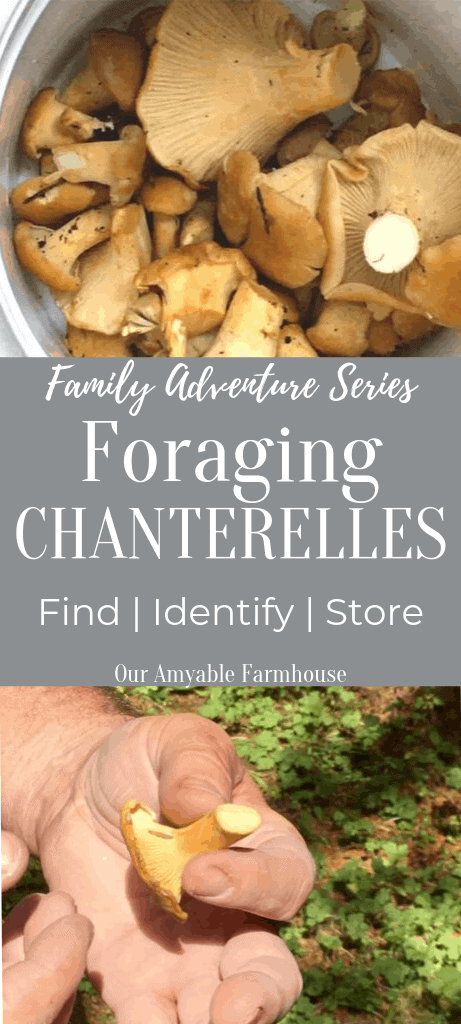Foraging for Chanterelles — Family Adventures

Come along with us as we forage for chanterelles, the golden mushrooms, in this installment of our Family Adventures Series.
If you’re new here, you can read and watch videos all about our Family Adventures Series that explains how we create expectation and excitement for adventuring and spending time together as a family.
This time of year, the beginning of fall, is the time to pick chanterelle mushrooms here in the Pacific Northwest. If you’ve never eaten them, I’m sorry. They’re really good. Divine even. I have seen them in Whole Foods and New Seasons. However, I’ve never purchased them. They run around $20/pound here in Oregon. Maybe you can get them for a better price where you live!

I’m a very budget conscious, debt-free living fanatic. So, a picking we will go! I don’t mind it at all; in fact, my family doesn’t seem to mind either. They’ve really gotten into the adventuring/foraging part and look forward to it!
Where to look for Chanterelles
Mushrooms grow in moist, wet climates. Like the ones you find in the forest.

Here in Oregon, you can find them growing all around the state. If you live here, venture out to find some for yourself. It’s easy to forage for chanterelles as they are found on the Cascade Mountains and in the Coast Range, in the Willamette Valley and on the Pacific Coast. They are abundant in the Mt. Hood area as well as the Willamette, Umpqua National, and Tillamook State Forests.
How to Harvest
Using a knife, we cut the mushrooms near the base close to the ground level. Some say you can just pick the mushroom, or pull it up out of the ground. We don’t like to do that because various sources highly recommend to cut the mushrooms from their base instead of pulling them up, to keep the small mushrooms and their base still growing.
We try to be responsible foragers, after all.
Why Forage for Chanterelles?
Did you catch the price? Yeah. Not buying them anytime soon, nor am I creating a line item in my budget for them. After all, there are more important things that need budgeted: clothing, medical expenses, retirement. Shoots, let’s be real: chocolate and date night take priority. 😉
Nutrition Powerhouses
Chanterelles are loaded with many health benefits. They are a source of dietary fiber, protein (8 essential amino acids), potassium, copper, manganese, iron, Vitamins C, D, B, and A. With these compounds, chanterelles are immunomodulatory, anti-inflammatory, antioxidant, antiviral, anti-cancer, antimicrobial and antigenotoxic. SOURCE Again, being honest: I don’t know what half those anti-blah blahs are, but it sounds healthy.
How to Eat and Store Chanterelles
Don’t eat these golden beauties raw. They must first be cooked to break down their cell walls to aid in digestion. If your littles decide they like to eat mushrooms raw (like my Beauty #4 does, and will!), don’t fret. No need to call poison control or anything. It will just give them an upset stomach for awhile. There’s always peppermint, ginger, or bitters (like orange or fennel) to help with that. Or ipecac, but that one’s not really fun.
Once we’ve returned to the homestead with our foraged, golden cups, I give them a good rinse. I try to school the Amyable Nation in the art of a clean harvest. However, they are less than impressed with my educating-while-adventuring approach apparently. Perhaps I should introduce them to the washing part. Then they’ll know in their knower what I know. Yeah, that’s it; school of hard knocks. Why didn’t I think of that before?
After the mushrooms are rinsed and cleaned thoroughly, I like to slice them up for either sauteing or dehydrating. Once sauteed, I bag them up in zippies and store them in the freezer. These are perfect for scrambles, soups, sauces and roasts. This is the first time I’ve used the dehydrated method to store. When I’m ready to use them I will rehydrate the mushrooms in hot water to throw in scrambles, or just throw them in dry when preparing a soup or sauce, since they’ll naturally rehydrate when cooked in those types of meals.
Chanterelle Foraging Family Adventures Series Video
Know for sure you’re foraging chanterelles!
There are mushrooms that look like chanterelles but are poisonous. Here’s a list of what to look out for as you forage for chanterelles. It is not a chanterelle if:
- Cap is round and flat
- Split mushroom has a hollow stem
- Internal color of its flesh is not white
- Gills are present – gills are separated easily

This website offers an informative article and infographic on what to look for and what not to pick.
Pin It, Share It!

Have you had chanterelles?
Oh the things you can make with these mushrooms! Quiches, soups, pizza, scrambles, gravies, reduction, and more! Do you buy chanterelles from the market or hunt for them in the wild?

September 26, 2019 @ 4:39 pm
We have tried to find mushrooms on our property, to no avail. You have inspired me to look elsewhere, these look so good!😊
September 26, 2019 @ 5:50 pm
I’m so glad, Jenn! Keep looking!
September 26, 2019 @ 2:51 pm
This would be so fun! I wonder if any edible mushrooms grow in Colorado.
September 26, 2019 @ 5:50 pm
It is so much fun! It really brings out the inner prairie, Ma Ingalls loving self for sure. I always think I was born in the wrong generation. Then I remember how much I love the internet LOL!
September 26, 2019 @ 5:54 pm
There is mushrooms in CO, yayyyyy! A quick search revealed several resources that talk about it. Here’s one https://www.modern-forager.com/colorado-wild-edible-mushrooms/